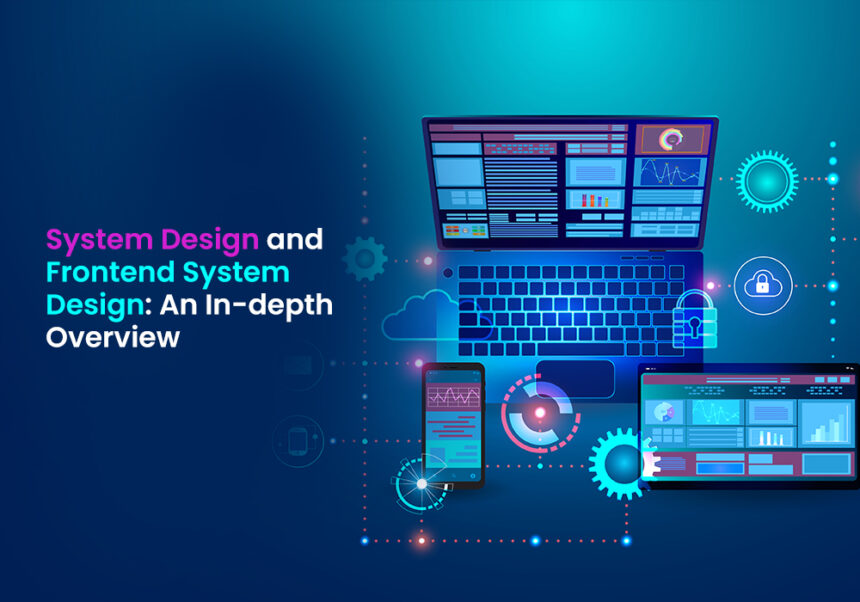Introduction
System design is an important component of software engineering that entails the system architecture, components, and data flow of a system to satisfy particular demands. It is vital in developing scalable, efficient, and maintainable applications. Frontend system design, a part of system design, deals only with the structure and design of the user interface and the client-side application logic.
What is System Design?
System design is the act of designing the blueprint for a software system. It is making high-level architectural choices, including:
- Selecting the appropriate technology stack
- Identifying the components of the system and how they interact with each other
- Achieving scalability and performance
- Designing for reliability and fault tolerance
Important aspects of system design are:
High-Level Design (HLD): Describes the system architecture and significant components
Low-Level Design (LLD): Explains the internal design of individual components.
Data Flow: Understanding data flow within the system.
Database Design: Organizing data storage for performance and scalability.
API Design: Creating interfaces to facilitate communication between system components.
Frontend System Design
Frontend system design deals with the architectural and structural aspects of client-side development. It seeks to build an ideal user experience with good performance, scalability, and maintainability.
Key Considerations in Frontend System Design
Component-Based Architecture: Newer frontend frameworks such as React, Angular, and Vue promote dividing the UI into reusable components.
State Management: Effective state management libraries such as Redux, MobX, or React Context provide predictable and consistent state changes.
Performance Optimization:
- Lazy loading
- Code splitting
- Caching strategies
- DOM reflows reduction
Responsive Design: Making applications function flawlessly on various devices and screen sizes.
Accessibility: Creating interfaces accessible to people with varying abilities.
Routing: Enabling client-side routing for single-page applications (SPA) with tools such as React Router.
Error Handling: Offering strong error boundaries and fallback UIs.
Testing: Unit, integration, and end-to-end tests for code reliability.
Example Frontend System Design Flow
Requirement Analysis: Define scope and user requirements.
Component Breakdown: Break down reusable UI components.
Data Flow Design: Establish state management and data flow.
Routing Setup: Establish application navigation.
API Integration: Plan data fetching and handling from the backend.
Performance Strategies: Integrate optimization strategies.
Error Handling Plan: Establish user-friendly error messages.
Testing Plan: Test all components and flows.
Conclusion
System design and frontend system design are the basis for developing reliable applications. While system design focuses on overall structure and scalability, frontend system design focuses on user experience and client-side performance. Both are important to master so that high-quality software systems that satisfy user and business needs in an efficient manner are developed.





